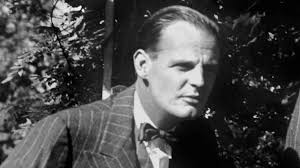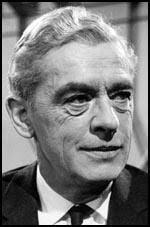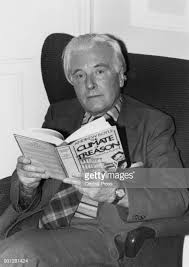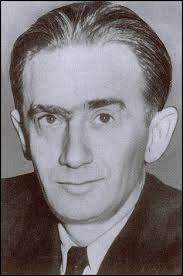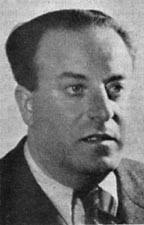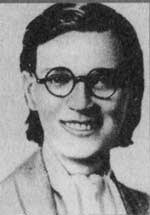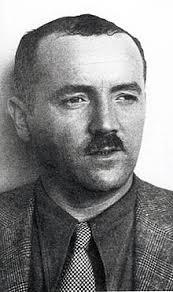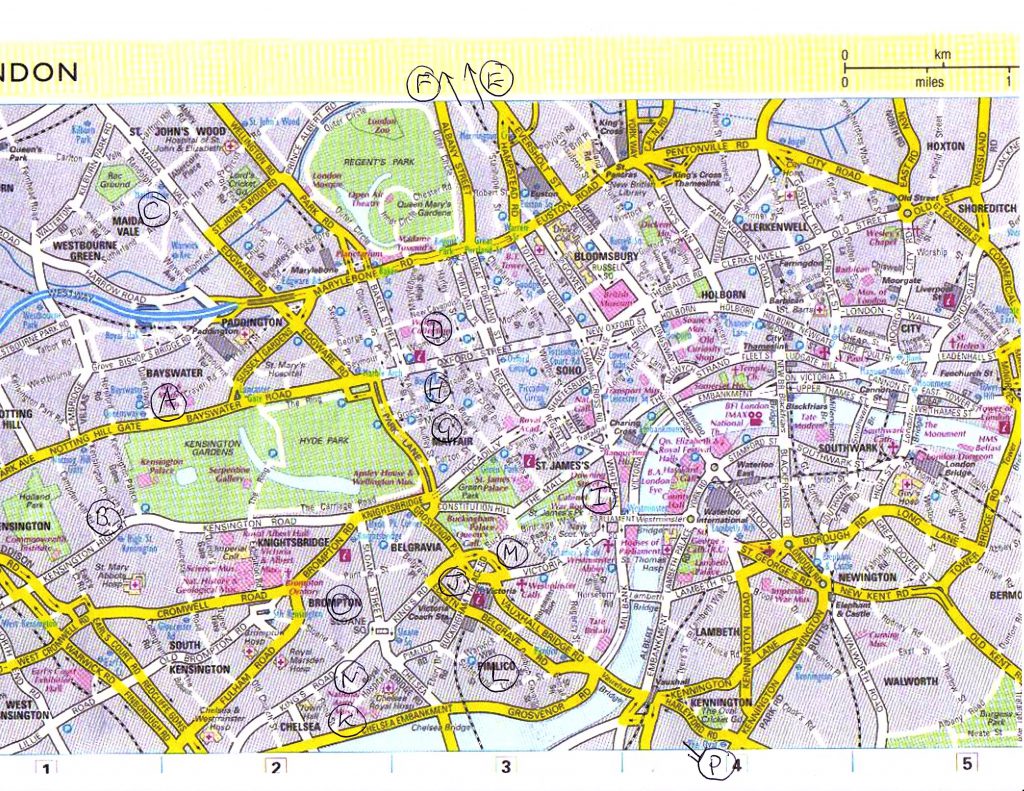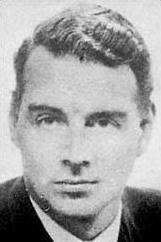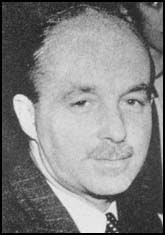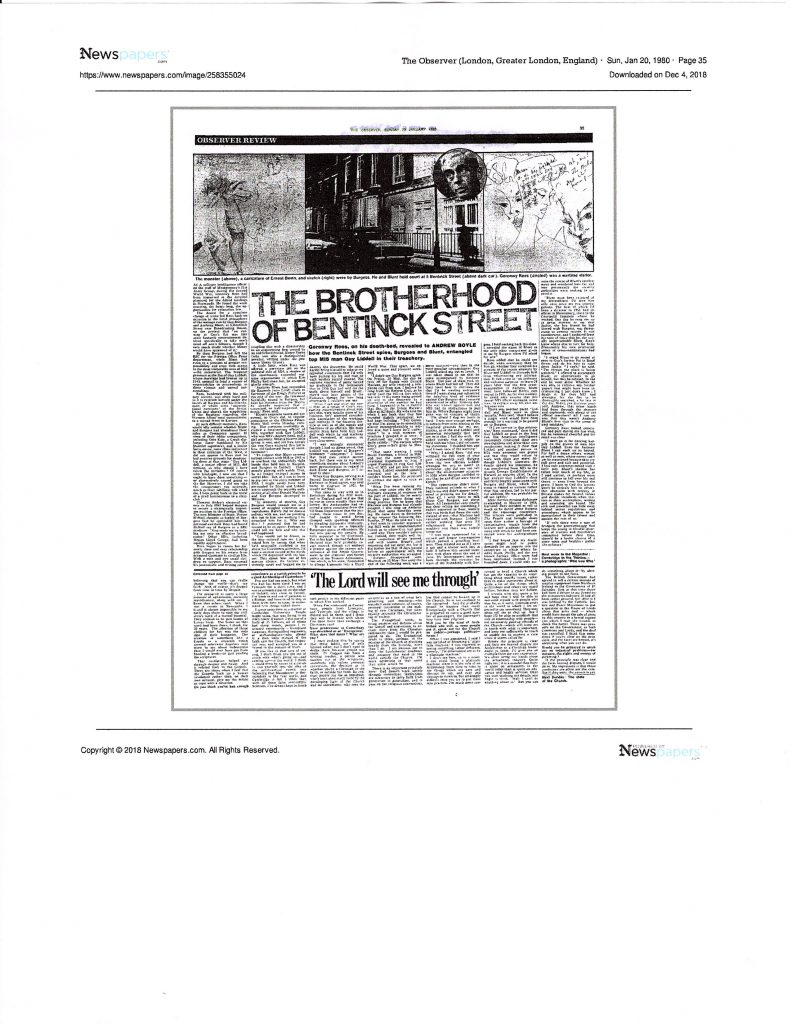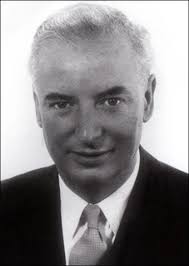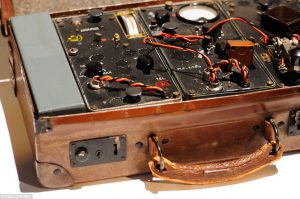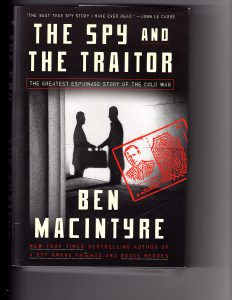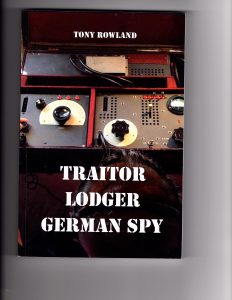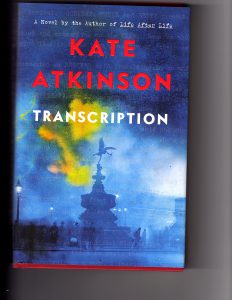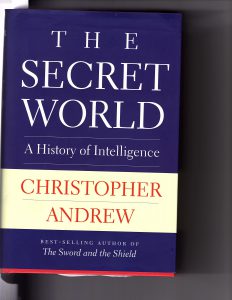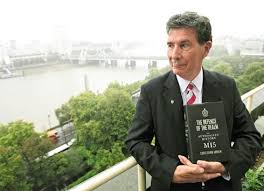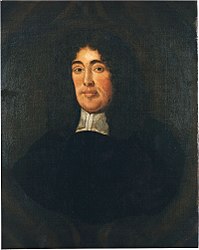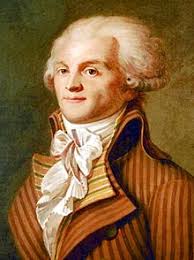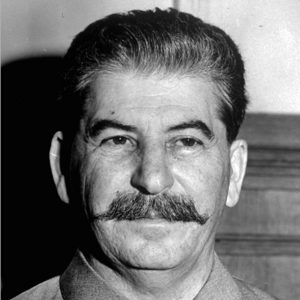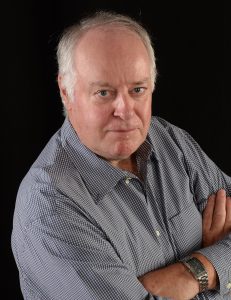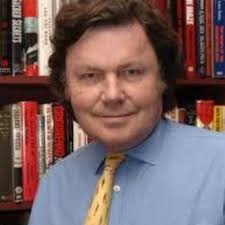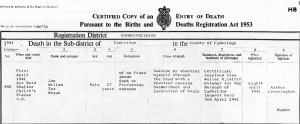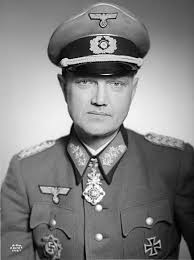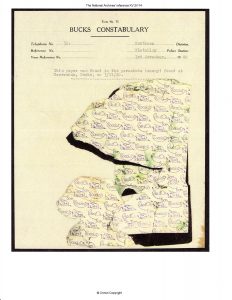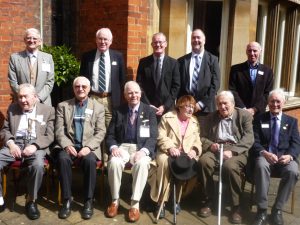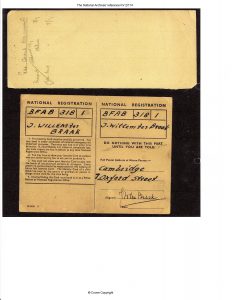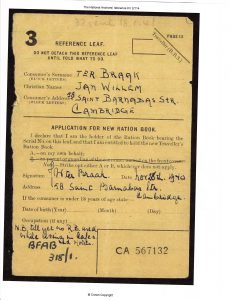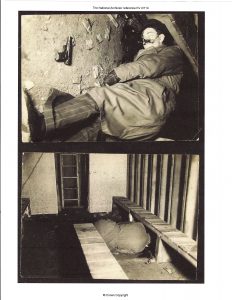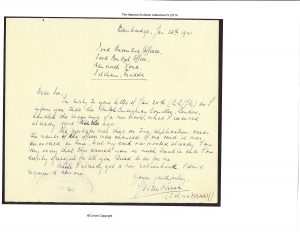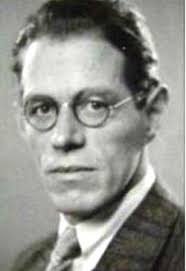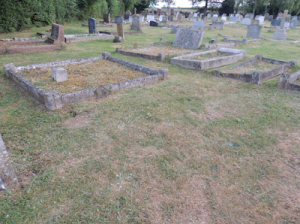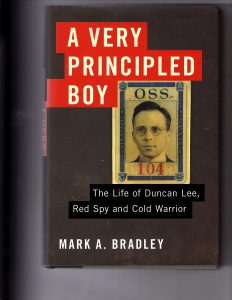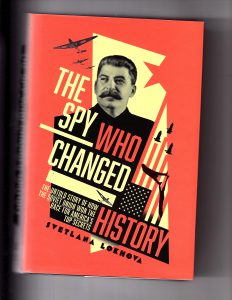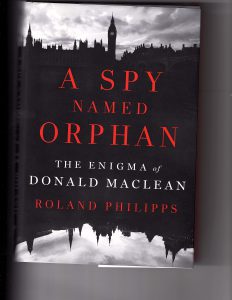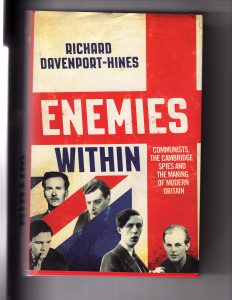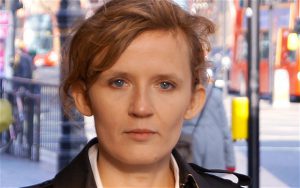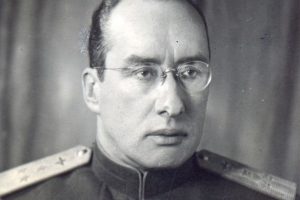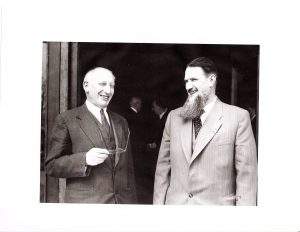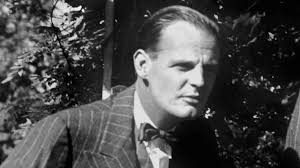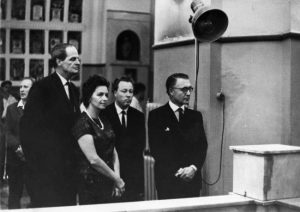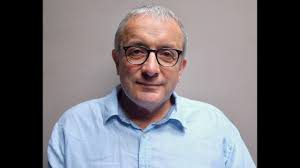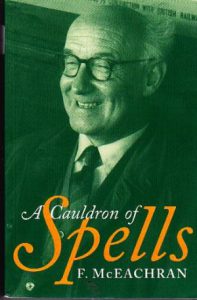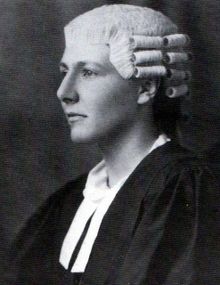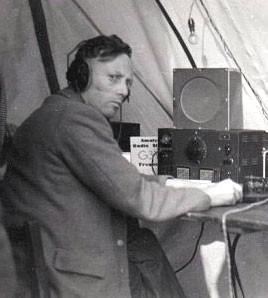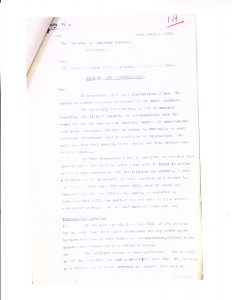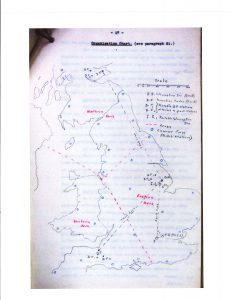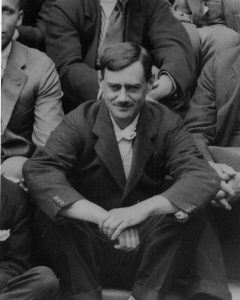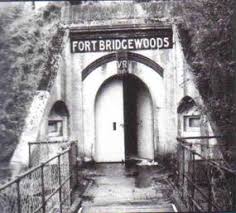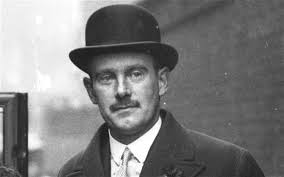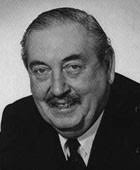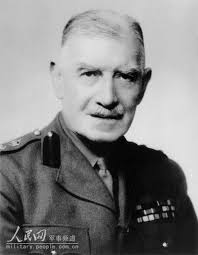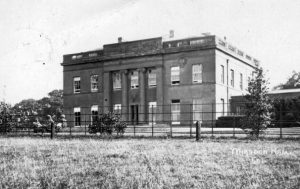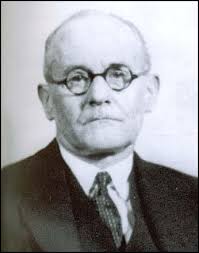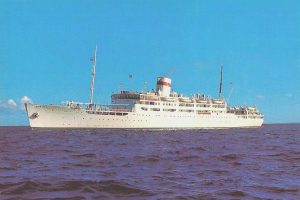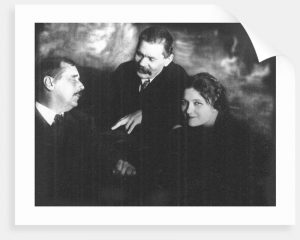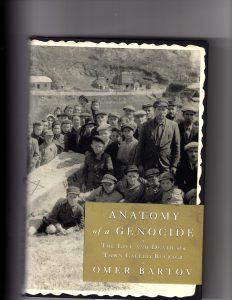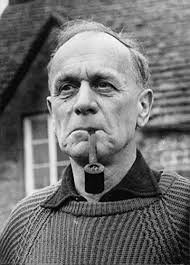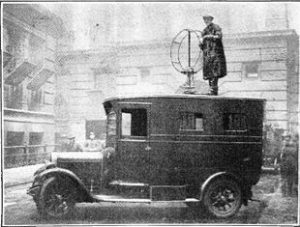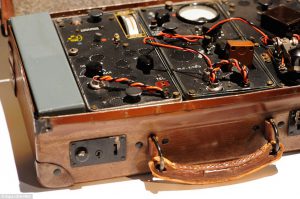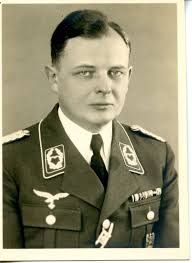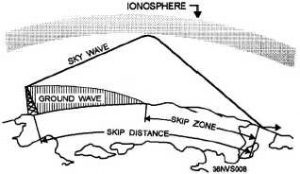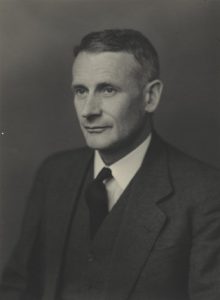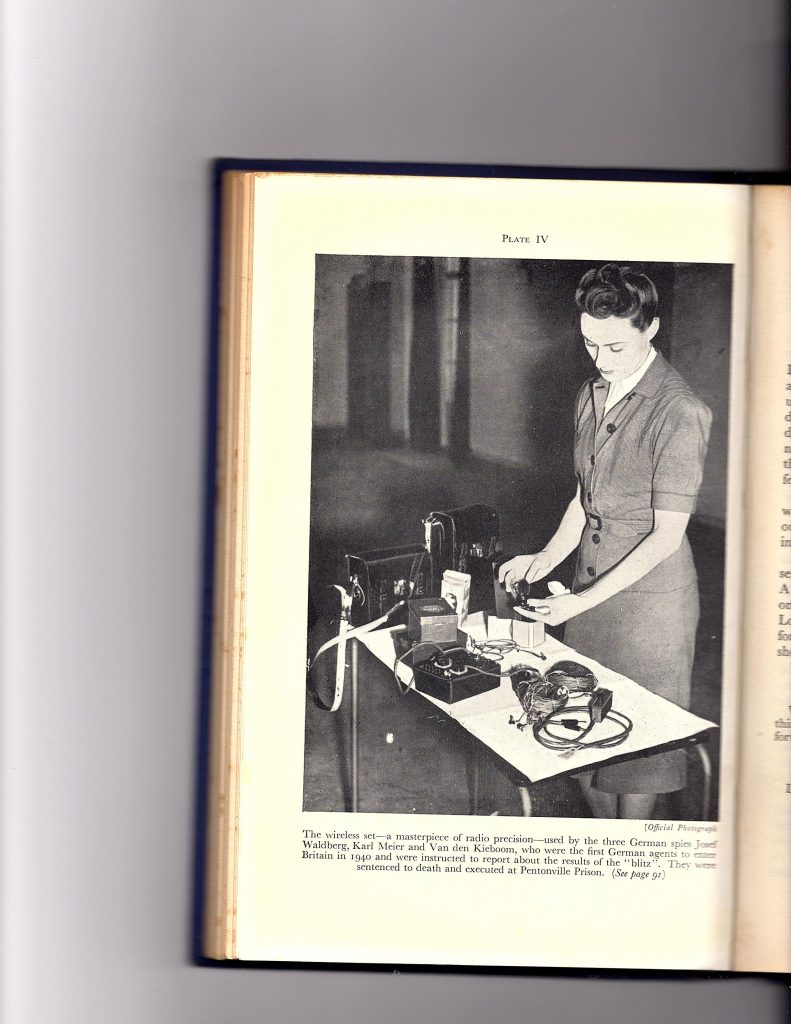
News Update:
Alert readers will have noticed that I received important communications from Roland Philipps (the biographer of Donald Maclean) and from Jan-Willem van den Braak (the biographer of the Abwehr spy Jan Willem ter Braak), whose work is being translated from the Dutch for publication in the UK. I shall report on the outcomes of these dialogues in next month’s report.
An observation on Guy Liddell and Roger Hollis by one of my contacts in intelligence inspired me to break out in verse on the subject of MI5’s efforts to counter Soviet influences. The doggerel can be found at DiaryofaCounterEspionageOfficer.
************************************************************************
After I had put Part 3 of this saga to bed at the end of September, some thoughts that I had vaguely touched on in earlier episodes returned to me with more vigour: What if the mistakes over ter Braak and the controversial report by Walter Gill (which effectively concluded that domestic wireless interception was not necessary) were both deliberate exercises by MI5 and its partners? Were the plans for the double-cross operation that far advanced in the last few months of 1940 that it was considered vital to give indications – in the belief that the Abwehr would pick them up – that Britain’s wireless interception policies were so weak that German agents could essentially roam at will, and broadcast home undetected? After all, as early as September 1939, Guy Liddell of MI5 had written that ‘it was in our interests that the Germans should regard us as grossly inefficient in these matters’, and that ‘if they thought our organisation was good they might well ask how it was we managed to get his [SNOW’s] messages through’. And were the Abwehr’s planting of obviously fake identification cards on its agents a deliberate ruse to determine how gullible the British counter-espionage services were?
These may be utterly fanciful notions, but they have a modicum of sense about them, as all such exploits at face value are very difficult to explain. One has to assume that agencies like MI5 and the Abwehr were continually thinking: how will our enemy counterpart think and act? (A British FOES committee did in fact exist: Guy Liddell described it as ‘an inter-services committee that tries to put itself in the position of the enemy intelligence service’.) And, if some sensible insight were applied, each intelligence section should have assumed that its counterpart, because of native influences, might in some circumstances act in a different fashion. Thus, in this instalment, I start to explore the variations in the strategies and successes of the major European-based espionage/sabotage organisations: SOE (Special Operations Executive), the German Abwehr, and the network of the Soviet Union’s GRU and KGB spies, and what their controllers should have learned from their experiences in one theatre of war to apply to another. There is a symmetry in some of the things undertaken by each organisation, as they strain to develop measures to confound the forces trying to counter them. Yet one can also spot asymmetrical aspects, driven by the idiosyncratic nature of each force, including their overall motivations and objectives, the personnel they selected, the territorial dimensions, and the cultural drivers behind their operations. It is hard not to suppose, however, that the policies of each were not somehow affected by their knowledge of what their adversaries were doing with their own offensive activities.
The focus of my research in this series has been the detection of illicit wireless. It is worth recording here that the primary purpose of what is commonly known as RDF (Radio Direction-Finding, but implicitly including Location-Finding) had, before the war, been the interception and decryption of government (e.g. military, diplomatic and police) traffic. Initially, precise location was not as important as content. As countries started to perform intelligent traffic analysis, however, the origin – and mobility – of transmitting stations, especially military units, became much more significant, often providing intelligence even though the underlying messages could not be decrypted. Then, as the combat started, organisations had to start to apply their knowledge to the possible threat of illicit stations operating behind their own lines.
With all three combatants, the techniques for long-range triangulation were well-developed by the time war broke out, and thus could in principle be quickly adapted for identifying illicit domestic transmissions. The paradox was that, owing to the vagaries of the behavior of radio waves, it was often easier to pick up transmissions originating abroad than those issuing from inside the country’s boundaries. As I explained in Part 1 of this saga, low-powered wireless sets operating on high-frequencies in domestic territory, designed to exploit ‘bouncing’ off the ionosphere, were often hard to detect because of the skip zones involved, and widely dispersed human interceptors would have been needed to pick up their ground waves. Such a set-up was possible in the United Kingdom, but not in the expanding German Reich. Moreover, the finer granularity required for locating individual wireless sets (at building-block or house level) demanded new mobile equipment and techniques not explored in long-range location-finding.
As I discuss the strategies and challenges of the three espionage forces, and attempt to assess their effectiveness, I shall be considering them under the following criteria:
- Operational leadership: How good were the directors in planning how objectives should be met, and following up by providing the motivation, material, and structure to allow agents to be successful?
- Quality of operators: Were agents with the appropriate profile chosen for the job in hand?
- Quality of training: Did the agents receive thorough and suitable training?
- Quality of equipment: How effective was the equipment (primarily wireless apparatus) for the location of operation and for transmission needs? Were conditions such as local power supply properly taken into account?
- Operating procedures: Were safe and secure operating procedures defined, and did the agents follow them?
- Remote support: Did the agents receive reliable and effective support from their home controllers?
- Detection capabilities: How effective were the enemy’s radio-detection and direction-finding mechanisms?
- Social environment: How hostile or sympathetic was the social environment in which they had to work?
- Counter-Intelligence strategy: What goals drove the counter-espionage strategy of the enemy on whose territory the spying took place?
June 1941 constitutes the major chronological dividing-line in the conduct of wireless espionage. (In the light of my research, I have deviated from the temporal Phases identified in my first post in this series, which had Phase 1 completing at the end of 1940, and Phase 2 winding down in June 1942.) The Nazi invasion of the Soviet Union immediately changed the German attitude in Soviet counter-espionage from one of wary passivity to aggressive pursuit. The Russian stance in illicit communications switched from cautious dormancy to careless urgency. For Britain, it signalled that any planned invasion of the island nation had been postponed indefinitely: the timing coincided with the transfer of RSS to SIS, and the implementation of the new structure in MI5 under David Petrie. The date has less significance for SOE: it was still in an experimental, groping stage in the summer of 1941, with only two radio-stations established in France by that time. My analysis thus presses forward in this dimension of espionage and sabotage to address the continued struggles of the unit into 1942. I now summarise the activities of the three agencies in this period before delving into more detail.
I have shown how the greatest intensity of Nazi attempts to infiltrate British territory occurred in the autumn of 1940 (Operation LENA), with a couple of reconnaissance landings (by Jakobs and Richter) occurring in the spring of 1941 – i.e. before Germany’s alliance with the Soviet Union turned into a clash. By then, with the plan to invade the United Kingdom abandoned, and Hitler’s attention now directed to Operation Barbarossa, the agents whom the Abwehr had apparently successfully installed in Britain took on less importance. They appear to have been largely forgotten, or abandoned, and it took the arrival of new ‘spies’, such as TRICYCLE, GARBO and TREASURE (whom I shall cover in the next chapter), to re-activate the espionage – and the Double-Cross – project. Yet using wireless was not at the forefront of the Abwehr’s plans, and MI5, in their efforts to facilitate the passing on of fake information, had to be very careful and imaginative when encouraging use of the medium.
As far as Britain’s own plans for espionage and sabotage were concerned, Churchill had in the meantime (July 1940) established the SOE as a force to penetrate Nazi-occupied Europe, and to soften up and harass the invader’s government of occupied territories. Yet this was not primarily an espionage organisation, like SIS (whose network had been almost completely destroyed at the outset of war.) It was an outfit committed to sabotage, and, while wireless communication became a critical part of its operational infrastructure, the technology was used more to arrange for shipments, drop-offs, and pick-ups, and only secondarily as a mechanism for providing intelligence. Sabotage operations also drew more obvious attention from the enemy: furthermore, in the first two years of its existence (i.e. until the summer of 1942), SOE was hampered by being reliant on Section VIII of SIS for its wireless equipment, wavelengths, codes, etc. The experience in responding to illicit SOE transmissions in France may have given the German counter-espionage agencies a leg-up when the Soviet apparatus fired up in the summer of 1941, but, as will be shown, the evidence for this is shaky.
When Hitler invaded the Soviet Union, all Soviet agents in place in Germany were immediately activated to provide intelligence about Nazi war-plans. Yet they had not been completely dormant before then. The situation was in fact more complex than that. After the show-trials and purges of 1937-1938, the KGB and GRU networks had been patiently rebuilt – not just in Germany, but across most of Western Europe. As early as May 1940, however, when Paris fell, Moscow suspected that relations with Nazi Germany – despite the Ribbentrop-Molotov Pact – might deteriorate, and diplomatic representatives (e.g. Kobulov in Berlin) started building networks of informers, not only in Germany but also in Poland and Czechoslovakia. Elsewhere, the Soviet Union’s spies had long been active, such as in the origins of the famous Red Orchestra group in Switzerland, led by SONIA (Ursula Kuczynski) and DORA, the Hungarian Sándor Radó, who had been recruited in 1935, and moved to Switzerland in 1939. Before 1941, however, couriers, and communications through local Soviet embassies, had been a much more convenient method of passing information than the use of wireless transmission methods.
Abwehr Spies up to June 1941
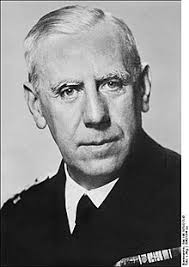
The decision to infiltrate spies into Great Britain in late 1940 was taken at short notice, but, like many events of a time when feints and deceptions were part of the strategy, the exact date when Admiral Canaris initiated the LENA programme is uncertain. In 2018, Bernard O’Connor, relying on the rather dubious transcription of Lahousen’s War Diaries claimed by Wighton & Peis sixty years earlier, asserted that Canaris told his Abwehr officers as early as June 22 that gathering intelligence on Britain, in preparation for the planned invasion, was of the highest priority. That early preparation is vaguely echoed by Niklaus Ritter in his 1972 memoir, Deckname Dr. Rantzau, where he improbably describes being in the company of Caroli (SUMMER) and Schmidt (TATE), ready for their departure some time in July, when they had already completed their eight-weeks’ training. Yet Ritter’s memory was at fault: he describes them as leaving on the same plane – something which the British archives strongly refute, so one must question the reliability of his memory. John Lukacs, in The Duel, represents Admiral Raeder as still trying to talk Hitler out of invading Britain as late as July 11, with Hitler responding in terms of wanting to make peace with the United Kingdom. O’Connor and Ben Macintyre both refer to a conference held in Kiel ‘some time in July’ to plan the details of the LENA operation, an event confirmed by the Kew file on the Hamburg Abwehr officer Praetorius (KV 2/170-1), and given precision by KV 3/76, which sets it as taking place on July 16. That would dovetail with Ritter’s account that eight weeks of training had to be accomplished to meet Hitler’s deadline of September 15.
Praetorius’s recollection was that the agents parachuted in at this time would ‘only have to be of independent means for 6-8 weeks as by at time the invasion of England was expected to be an accomplished fact.’ Yet the chronology does not work. If a decision had been made in July, the recruitment and training of agents was supposed to take eight weeks, and their subsequent independent existence on British soil might have been expected to take another six to eight weeks, the latest date for a successful invasion would have to be placed as late as early November. While Anthony Cave-Brown gave August 1 as the date that Hitler issued his Directive 17 to prepare for the invasion of Britain, Operation SEELÖWE (SEALION), Churchill himself reported it as being on July 16, with Hitler’s apparent objective of having his forces arrive four weeks later. On September 11, however, Hitler had to delay the invasion order until September 24, and on September 17 he ordered the indefinite adjournment of SEALION, and formerly cancelled it on October 12. Yet the first LENA agent, Caroli (SUMMER) did not parachute in until September 3, and his colleagues were still arriving in early November. It sounds as if Canaris gave Hitler unreasonably optimistic indications of the speed with which agents could be recruited and trained: if Hitler had been able to stick to his original plan, there would have been no planting of infiltrators in the United Kingdom, successful or not, to assist the invasion. Yet the program unaccountably went on after invasion plans were suspended, which would have made nonsense of the ability of the agents to survive independently for a few weeks.
Given the haste by which recruits had to be selected, vetted, and prepared, it is thus difficult to take seriously the claim made a few years ago (in Monika Siedentopf’s Unternehmen Seelöwe) that the invasion of Britain was sabotaged by Canaris and his team, in that they selected unsuitable candidates as spies who simply let the side down. Apart from the chronological problems listed above, however successful the few who landed might have been in evading capture, their effect on a planned invasion that required destroying the Royal Air Force would have been minimal either way. But that does not mean that the Abwehr’s project was not quixotic, or even cruel. The agents were chosen in a hurry: they were not native Germans, but mostly citizens of bordering countries (Denmark, Sweden, the Sudetenland – the last, of course, transferred from Czechoslovakia to the German Empire). Some were diehard Nazis, some were lukewarm, others were pressured into signing up by threats. The belief was that agents from outlying countries would fade into the background more easily than native Germans: some had spent time in the UK beforehand, but, overall, they were hopelessly unprepared for life in the United Kingdom. And as potential observers, they were untrained. Reports at Kew indicate that ‘though they were expected to report on such military objectives as aerodromes, land mines and gun batteries, on examination they showed only a vague idea of the significant points to note.’ They had ‘only an amateur knowledge of transmission technique.’
The main point, however, was that the spies of the LENA operation were not expected to be operational for long, a fact that is reinforced by the way that most of them were equipped. More than half of the eighteen (the exact number is debatable) who landed, either by parachute or boat, between September 3 and November 3, 1940 either carried with them a transmitter only, or no wireless equipment at all. A transmitter might have been useful for sending a brief set of dazzling reports about air defences, bomb damage, or weather conditions, but without an ability to have confirmed whether one’s messages were being received correctly, it would have been a short and demoralizing career. For those agents being parachuted in, wireless apparatus was a significant health hazard: at least two spies were injured by virtue of their collision with the earth when harnessed to sets weighing twenty pounds or more. Most had not practiced a parachute-jump before. Moreover, many were told in Hamburg that there was not enough shock-proof material available, and thus they would be equipped with transmitters only. If wireless sets were dropped separately, there was the risk of the apparatus’s never being found. TATE demanded he be equipped with a combined Transmitter/Receiver. As his Kew file reports: “His controller, RITTER [Captain Rantzau] then informed him that arrangements were being made for him to take with him to England a separate transmitter and receiver and also a large transmitter (called a ‘Z.B.V.’) which would be dropped separately and which he could destroy if the smaller sets were unbroken after landing.”
MI5’s analysis of the equipment the agents were provided with would indicate that they did not have a high chance of success in trying to contact their controllers. The boat agents (Meier, Waldberg, Kieboom and Pons, who arrived on the Kent coast) were equipped with compact and light cases, one weighing 7 lb., and containing batteries and connecting wires, the other weighing only 4 lb., containing the transmitter, aerial and spare valve. (This was in dramatic contrast to the bulky devices that SOE agents were required to take to France or, say, Yugoslavia, in following years.) Yet the experts judged that such low-powered devices ‘would require exceptional conditions to work over 100 miles’, with an expected range of nearer 50 miles. * If that assessment is correct, it would show an extraordinary misjudgment by the Abwehr experts: reducing power to such a degree that transmissions would not only be undetectable locally, but would also not have enough energy to reach their intended target. This statistic is put into perspective by the fact that the distance between the port of Southampton and Cherbourg is over 100 miles, while German wireless agents were transmitting home from as far afield as New York and Brazil.
[* This opinion needs to be balanced against that of E. H. Cookridge, who, in his 1947 work Secrets of the British Secret Service, described Kieboom’s equipment as ‘a masterpiece of radio precision’, following up by claiming that ‘the transmitter allowed to send [sic] messages over a range of more than 600 miles, yet was so small that it could be hidden in two leather boxes . . .’ (see Figure below). In his Preface, Cookridge thanked the Foreign Office, the War Office, the Home Office and the Lord Justice’s Office for their assistance, so his book should probably be regarded as an item of selective disclosure for propaganda purposes, perhaps maximizing the wireless threat.]
SNOW’s transmitter was reported to have a much more realistic range, of up to 1200 miles. Likewise, CAROLI’s (SUMMER’s) equipment was much heavier and more powerful, but would have a corresponding disadvantage of requiring much more space to set up the aerial. “Aerials provided would not be easily untangled and satisfactorily erected except in secure privacy with plenty of space. E.g. indoor space 60 ft. long or a secluded wood with a fairly clear space 6o ft. long with trees etc. on which to tie the end of the aerial to a height of at least 6 ft.” How a spy in tight wartime conditions, in densely populated England, was supposed to accomplish such a task is not clear. A tentative conclusion by the report at KV 3/76 was that the agents were so ill-prepared that they should perhaps be considered as decoys.
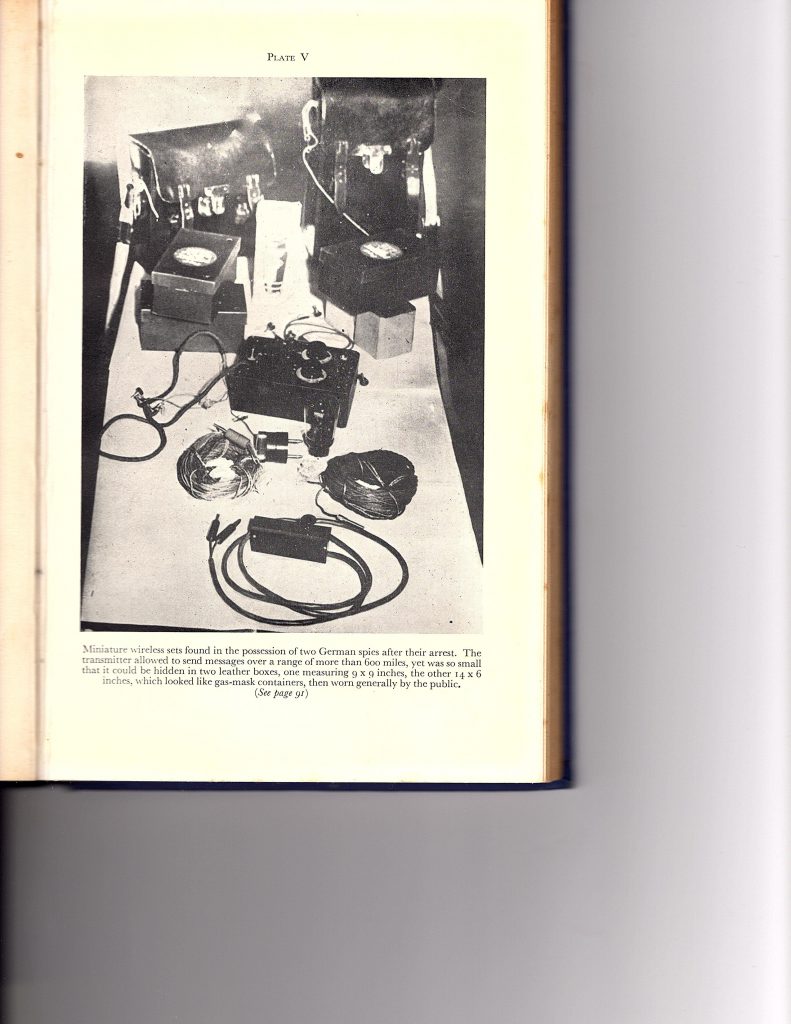
Nevertheless, it seems that the Abwehr stations stayed observant, looking for transmissions from the agents. The same file, K 3/76, based on interrogations of the six prominent spies captured by September 1940, supplemented no doubt by RSS interception and decryption of Abwehr exchanges, discloses the following: “It appears from other sources [sic: surely a code for Ultra decrypts] that a constant watch is kept by Hamburg, Berlin, Paris and Cherbourg, for the reception of any wireless messages by all agents despatched to the U.K. This is presumably in order to make sure that messages shall not be missed through bad atmospheric conditions.” The advantage gained by the German Reich’s territorial extension into Northern France (which also aided triangulation for location-detection) was counterbalanced by the fact that ENIGMA radio communications had to be used rather than highly secure land-lines, which allowed British Intelligence to tap into the plans and processes of the Abwehr. Moreover, by this time, Hamburg (which would have had secure contact with Berlin) was shifting its attention to Norway, placing the responsibility for Britain on to Paris and Cherbourg. A dangerous increase in interceptible traffic was caused by the fact that the Abwehrstelle in Brussels was used as an intermediary point for traffic, with messages passed to it from advance stations to be decrypted, and then passed on to Hamburg, Paris, or Berlin.
Because nearly all of the spies were picked up soon after they landed, little can be said about the adequacy of their training. Ter Braak apparently struggled with his receiver: concealing aerials in densely-populated Britain, with vigilant landlords and ladies, would have been a problem. TATE had only one frequency to work on, which was effective only in daylight hours: this inhibited his activity later. TATE admitted that he had been taught the fundamentals of operating, but nothing about wireless theory, which would mean he would be helpless when problems occurred. He said that he only knew “the practical details of how to join it up, erect the aerial, and tune the transmitter by the lamp. He thought he could spot a disconnected wire inside, but that was about all”. As Reed of B1A reported: “He had been instructed to join motor-cycle batteries in series, but three 6 volt batteries would burn out his valves.” Consequently, even with MI5 assistance, TATE struggled to make consistent contact. Reed reported, on October 1, that ‘experiments with [TATE’s] wireless were unsuccessful due to inefficiency of aerial provided with a set of so small an output.’ His first successful message was not sent until October 10: he was supposed to send a postcard in invisible ink to a contact in Lisbon if his wireless failed to work. She never received the postcard.
TATE had quickly understood that his life depended upon abandoning his Nazi affiliations, and following the instructions of his new captors. Unlike SUMMER, he did not have second thoughts, and thus did not employ any security code to indicate that he had been turned. (He claimed that the possibility of being captured and used had never been acknowledged by his trainers, and he thus did not have such a code.) He initially operated his set himself, and thus displayed a consistent ‘fist’. Yet the overall message to be gained from this exercise is that the Abwehr controllers soon lost interest. As early as September 7, Field-Marshal Jodl told the Abwehr to open up operations against the Soviet Union. The realization that German could not dominate the skies above Britain, and that a winter invasion across the Channel would simply be a recipe for failure, had by then convinced Hitler that it was time to turn his attention to the East.
What TATE’s files at the National Archives show is the enormous lengths to which MI5 and RSS went to experiment with his apparatus, attempting to make contact with Wohldorf. While SUMMER’s set had been shown to work quite quickly, MI5 provided their counterparts at RSS with all the details of call-signs, frequencies, and times so that the location-finding network of interception towers at Thurso, St Erth, Gilnakirk, Sandridge, Cupar and Bridgewater could gauge the strength of the signal, and give back advice. Hughes (W6B) and then Reed (who was on secondment from the BBC) had to move the set around from city to countryside, change the length of the aerial and fine-tune its alignment, and also have the complex instructions for TATE’s back-up set translated before they were able to send transmissions of consistent quality. Yet they were already sensitized to the need to avoid German direction-finding – to a degree that was unnecessarily cautious: they believed that the transmissions could have been localized to an actual building (e.g. Latchmere House), a degree of accuracy way beyond what the Funkabwehr was capable of at that time.
Meanwhile, agent SNOW (Arthur Owens) was being kept in close confinement. It should not be forgotten that SNOW was the original Abwehr agent equipped with wireless, and was notionally active right up until April 1941. Yet the first experiments with wireless were haphazard: he was supplied with a clumsy and reliable transmitter (only) in February 1939, but, since he was able to meet his handler, Ritter, in Hamburg until war broke out, and, after that, arrange regular rendezvous in the Netherlands and in Belgium until the Nazis overran those countries in May 1940, the use of wireless to pass on intelligence was not so critical. Of course, that made the task of monitoring what he said impossible, and suggestions that SNOW had betrayed his country by revealing suitable targets for bombing (i.e. going beyond the ‘chickenfeed’ that he passed in his encrypted messages) caused MI5 to terminate him, and incarcerate him for the remainder of the war.

MI5 was aware of SNOW’s wireless usage from the day his set was picked up. SIS even broke the set, and had to repair it. But SNOW did not make his first successful transmission until late August 1939: soon afterwards, MI5, aided by his wife’s jealous reporting of his duplicitous activity, arrested him, and then found both his transmitter, and then a receiver, concealed at his property in Surbiton. Under MI5’s tutelage, SNOW moved house to premises where his aerial would not stand out so obviously, and transmitted regularly on weather and less than critical military operations and preparation. The first Double-Cross message was sent on September 9, but no confirmation of receipt occurred for some weeks. At some stage in October, Maurice Burton, who had earlier checked to verify that SNOW was transmitting as instructed, took over the operation of the apparatus, and eventually a new afu transmitter-receiver was delivered through a third party.
Whether the Abwehr had been careful enough to pay attention to SNOW’s radio ‘fist’, or whether Burton was adept enough to emulate it, is not clear. The archival reports give every indication that Robertson and his team assumed that Ritter must have concluded that SNOW was being controlled by MI5. Guy Liddell even wrote, on February 2, 1941: “Another point that occurs to me us that the Germans must now be wise to the game of collaring an agent and forcing him to use his wireless set in our interests. There is in fact evidence that they are doing it themselves.” Yet the Abwehr used what SNOW fed to them concerning passports and ration cards to supply the LENA agents, and lure them to their doom or glory. Exactly who was deluding whom by the time SNOW was regarded as a high security risk may well never be established. A triple agent works only for himself, trying desperately to play one employer against the other in order to survive. Interrogators of Ritter after the war concluded that he had realized that SNOW had been turned, but, when Ritter wrote his memoir in 1972, he gave no suggestion that SNOW was anything but the genuine article. Ritter believed that SNOW was being used by MI5, but that the Abwehr had outwitted them. He certainly would not wanted to have admitted to his bosses in Berlin at the time that he had been deluded. Other Abwehr officers interrogated were more outspoken and direct about their suspicions: I shall explore these in a later chapter.
MI5 and RSS gained much from these experiences. They learned about the enemy’s equipment, and the RSS was able to test out its interception and location-finding techniques when they applied their sensors to TATE’s transmissions, in order to evaluate how effective they were. Yet this was a precarious time for MI5: the seeds of the successful XX Operation were quickly sown, but Liddell and others also came to realise that allowing ‘undetected’ radios to operate would require the existence of a ham-handed and inefficient detection service for them to evade interception. This concern would continue to dog MI5 throughout the war – the fear that the Germans must assume that the wily British had better radio-detection finding equipment than appeared to be the case, and would thus assume that their agents were not operating freely. And, as I pointed out in my article on ter Braak, is it not somewhat ridiculous to think that, in densely-populated Britain, with a citizenship well advised to look out for suspicious activity, that an obvious foreigner, with accented English, could traipse round the country picking up information, and then return to some lodging where he managed to conceal the existence of a lengthy aerial while sending in his reports?
For the Abwehr, their LENA spies were dispensable. The espionage service did not think they would survive long, and it had low expectations of their deliverables. As a July 1944 report submitted jointly by MI5 and SIS declared: “According to the calculations of one Abwehr officer, eight-five per cent of the agents dispatched were never heard of again; ten per cent turned in information which was either worthless or false; the remaining five per cent provided sufficient accurate reports to justify the expense of the remainder. The first two clauses of this sentence may have a greater validity than the last.” (The last observation was perhaps a tacit hint of the XX Operation.) Agent Richter may have been sent in to verify whether TATE had been turned, but the fact that the Abwehr never learned anything from Richter did not deter them. The Abwehr no doubt had it confirmed for them how difficult it was to infiltrate an island nation. MI5, even at that time, took pains to ensure that manipulated transmissions took place in locations where the spy was supposed to be, but the state of the technology on the German side at that time was probably inferior to that of the British: even with appropriate triangulation, transmitters could not be ‘pinpointed’ to much less than a circle of 20-mile radius, and there is no evidence that the Germans bothered. Yet the awareness of RDF as a technique for counter-espionage would have registered with them, and would come sharply into focus a few months later.
As a coda, and a point to be picked up later, the British apparently recognized, after the war, the Germans’ superior techniques in detection and direction-finding. In his 2011 memoir of his days at Bletchley Park, Secret Days, Asa Briggs writes that GCHQ acquired a field north of Bletchley that was later named Furzton. “A radio direction finding system developed by the Germans was installed there. Judged superior to all existing British systems, it consisted of an outer circle of forty and an inner circle of thirty smaller metal masts,” he adds. Yet a search on ‘Furzton’ fails to come up with anything else. (Google led me to Hinsley’s and Tripp’s Codebreakers, a book I own, but with no incidence of ‘Furzton’, which does not appear in the Index.) To learn more, perhaps, we must wait for the Official History of GCHQ to appear next year. The overarching conclusion must be that, after the initial excitement in setting up W Division in MI5 in August to track illicit wireless, the transfer of RSS to SIS, and the establishment of the XX Operation, accompanied by the belief that all German agents had been turned, incarcerated or executed, concern about illicit radio transmissions, whether they came from foreign embassies, maverick civilians, Soviet spies, or even undetected German infiltrators, the demand for prosecution of such activity through urgent and efficient location-finding went somewhat off the boil.
The Funkabwehr
The Nazis had their equivalent of Britain’s Radio Security Service, the Funkabwehr, sometimes translated as the Radio Defence Corps. Yet the Germans came rather later to recognize that the threat of domestic illicit wireless communications required a more committed function. Created by Hans Kopp in 1940, the Funkabwehr reported to the OKW, the Oberkommando der Wehrmacht, and readers may find references to the OKW/WNV/FU, a typically precise but wordy example of how the Germans described their units, Wehrmacht Nachrichten Verbindungen Funküberwachung, loosely the surveillance of radio intelligence and communications. Unfortunately, a good history of the Funkawehr remains to be written, as German records are unavailable. For a detailed history of the organisation, the Wikipedia entry at https://en.wikipedia.org/wiki/Funkabwehr is reasonably solid, but has a very shaky chronology, is written too much in the passive voice, and in my judgment contains several errors. * Moreover, it is highly dependent on a 1946 report compiled by the RSS itself, which can be seen at https://drive.google.com/drive/folders/0B_oIJbGCCNYeMGUxNzk0NWQtNzNhZi00YWVjLWI1NmItMzc2YWZiZGNjNjQ5, a folder in Christos T.’s excellent website dedicated to military intelligence matters. While this account lacks the benefit of historical distancing, and integration of much new material, I shall not repeat here the detailed evolution of the Funkabwehr’s capabilities.
[* The danger of referring to Wikipedia, or indeed any on-line source, is that the entry may change suddenly, or even disappear. The Wikipedia entry on the Funkabwehr has been expanded considerably since I started this article.]
Germany and Great Britain had long maintained ‘Y’ (signals interception) capabilities, the focus of which had been primarily diplomatic and political communications of foreign powers, but assumed interest in military plans and operations as war approached. Britain had listening posts throughout the empire, and Germany had established a similar network within the German borders. The Nazi interest in the years before the war appears to have been directed more against the Soviet Union: by 1937, from their intercept stations at Treunbritzen, Jüterbog, Königsberg and Breslau, they were picking up a large amount of NKVD traffic stretching from Murmansk to Odessa. This activity no doubt continued during the period of the Nazi-Soviet pact (August 1939to June 1941), and helped Hitler prepare for operation Barbarossa.
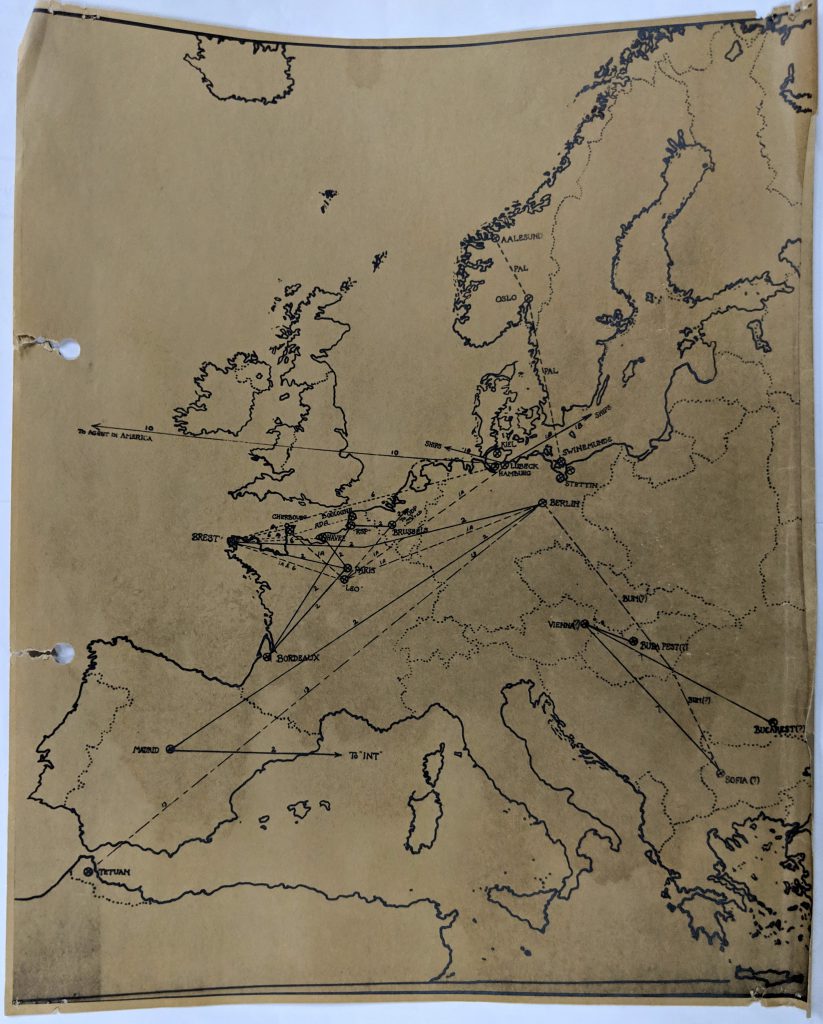
Yet, as the awareness of possible clandestine wireless activity within each nation’s borders increased, approaches to the problem started to diverge. True, the general methodology and use of technology were very similar, but the geographical and political constrains led the adversaries down different paths. First, the borders in the European theatre of operations remained stable for the British: the Germans had to deal with their fast expanding occupation of new territory. While it provided for a steady increase in suitable locations for interception stations (e.g. Brest, in France), it also increased the possible quantity of subversive communications. It also put more strain on inter-unit communications, since secure landlines were no longer available, and thus exposed more secret information transfer to interception itself. Moreover, the operations were frequently taking place in environments hostile to the invaders, with the risk of sabotage, and, certainly, non-cooperation.
Another aspect was duplication of effort. It sometimes comes a surprise to learn how fragmented the approach of a totalitarian nation could be to intelligence matters. Hitler encouraged rivalries, however, and there was a large absence of trust between organisations. In fact, the function of the Funkabwehr was split between the OKW unit and a section of the Ordnungspolizei (or Orpo) called the Funkabwehrdienst, which was under the control of Heinrich Himmler. Both units were responsible for the location and apprehension of those transmitting illicitly, but for most of the war their missions were divided by what could seem to be an absurd and unproductive distinction. Orpo was responsible for identifying clandestine operations against the government and the regime, while the WNV/FU directed its efforts against activities against the state. How they could confidently conclude which category a transmission belonged to before analysis, or why they discounted the fact that some factions might effectively be fighting both, has not been explained. Britain, on the other hand, maintained a unified control over interception, and generally benefitted from the large amount of trust that existed between the military, the political, the interception and the cryptographic organisations. It was not until 1943 that the Orpo and the WNV divided their tasks more sensibly along geographic lines.
One critical matter that the RSS report brings to the surface is that of distortion of signals, and how the proximity of electrically conductive objects of dimensions close to the length of the wave could affect both reception and interception. What the receivers of transmissions initiated from agents in enemy territory were interested in was content, and weakening of the signal would affect successful reception. Communication was one-to-one: the receiving station would be the sole unit dedicated to trying to capture a transmission. Distortion could mean that the signal was lost completely, or fell into the skip zone. Location was not important to such receivers: indeed, transmitters were encouraged to move around (with those clumsy antennas – but not too far afield so as to jeopardise the signals plan) to evade detection. Interceptors, on the other hand, were rarely interested in content: they probably did not have the resources or time to decrypt the messages. What drove them was location, so that they could quickly eliminate (or turn) the offending agent and equipment. Distortion might not mean complete loss, as multiple detectors had to be in place to perform the triangulation necessary, but it could mean that a faulty indication of location was reached.
Yet it was all a hazardous business. The presence of interfering objects (buildings, mountains), by radiating signals in new directions, can confuse the process of triangulation, or cause the assumed location to be challengingly large. This distortion can also occur simply because of the erratic behavior of the ionosphere, especially at time of sunrise and sunset. Guy Liddell reported, on February 10, 1941 that ‘the alleged parachutist’s [JAKOBS’s] transmitter from this country was heard again on Sunday but turned out to be a communication between Paris and Cracow’. In a 1944 report, written by British Intelligence to prepare its officers for the invasion of Europe, appears the following observation: “The skip distance of any transmitter is calculable in normal circumstances; but, occasionally, owing to temporary changes in the atmosphere freak results may be obtained, as in the summer of last year when the short wave transmissions of Chicago police cars were clearly (and tiresomely) audible on the south coast of England.” (I am confident that this pamphlet, available at Kew at WO-279-499, was written by Hugh Trevor-Roper: he was the Abwehr expert, and the prose has a donnish flair, and is regularly sprinkled with Latin phrases.) We should also remember that Britain’s scheme of catching all groundwaves by the dispersion of interceptors throughout the country could not conceivably be mirrored in Germany, let alone in its expanded territories. The dynamics of the cat-and-mouse game played between spies and enforcers must be evaluated in this context.
Overall, therefore, the reputation of German counter-intelligence as a ruthless and efficient machine, which has been encouraged by war-movies, and even historians of SOE, is certainly overstated. The Funkabwehr suffered from duplication, tensions of centralisation and decentralisation, inadequate training, poor communications, a shortage of qualified amateurs (unlike Britain’s Voluntary Interceptors), too rapid job movement, insufficient mobile units, sometimes poor quality equipment, and lack of appropriate language skills. Coordinates provided by remote RDF were frequently too vague to ensure successful local house-hunting. Certainly the discovery of the Soviet Rote Kapelle spy network in the summer of 1941 moved operations into a higher gear, but the organisation in France (for instance) remained weak until as late as 1943. The RSS report assesses the technical resources at the outbreak of the war as being ‘completely insufficient’, given the rapidly occurring military victories and the increase in occupied territory’. It tells a story of frequent failure, that it took weeks or even months before a transmitter was at all precisely located. Yet the RSS seemed also to be under the impression that the number of Allied W/T agents was rapidly growing in 1940, an illusion that is undermined by the histories of SOE that have appeared. The more innovative technologies and approaches of the Funkabwehr thus occur well after the period under the microscope in this chapter, and will be analysed in a future episode.
SOE and Wireless: 1940-1942
The SIS organisation in Europe had been greatly weakened by the beginning of war, and the Venlo incident on November 9, 1939 (whereby the Abwehr captured SIS officers in Holland, and gained detailed information about the service’s structures and personnel) crushed it. SOE was launched, with a charter written by the dying conservative Neville Chamberlain, and under the ministerial direction of the socialist Hugh Dalton, in July 1940. Its mission was to perform subversion and sabotage in those countries of Europe controlled by the Nazis. While Chamberlain declared that its operations should be tightly woven in to the greater military strategy of the war, this facet of its decision-making was never really clear. Was it supposed to disrupt the Germans’ efforts to produce war material? Was it designed to initiate minor diversionary attacks that would draw a high degree of military and police resources away from other arenas? Or was it intended to help prepare for the eventual invasion by softening up targets, and impeding troop movements? All these goals were troubled by the fear of what reprisals the Nazis might take on such incendiary activity, and what effect that might have on local morale. Moreover, SOE was always competing for resources – especially for aeroplanes and wireless equipment – and those often unfulfilled demands, hampered by other departments that questioned SOE’s effectiveness, meant that SOE had a very chequered history in the first two years of its existence.
The sources on SOE are fragmented. M. R. D. Foot’s SOE in France, originally written in 1966, and reissued in 2004, is an ‘official’ history, part of the Government Official History Series, but, as is clear from its title, covers France only. (In an interesting sidenote, Foot himself, in his 1976 work, Resistance, refers to SOE in France as a ‘quasi-official’ history.) Foot wrote another volume covering all of SOE, SOE: The Special Operations Executive 1940-1946, in 1984, but it is not an ‘official’ or even ‘authorised’ history. Its chronology is hazy, and it provides little detail on wireless equipment and procedures. After the war, an internal history was commissioned from an Oxford don, W. J. M. Mackenzie (who had not been employed by SOE), and was eventually published, in 2000, as The Secret History of SOE: The Special Operations Executive 1940-1945. In all three books, the coverage of wireless is very sketchy until 1943, after SOE’s own research and manufacturing facilities had been set up, and Colonel Gubbins rather belatedly introduced more rigorous signals procedures. Various memoirs refer to the use of wireless, but they are not always reliable. A number of files have been released to the National Archives in recent years, but few records of SOE’s activities in the early years appear to have survived fire, destruction or the weeders, and what have endured are (so far as I can judge) all undigitised
This report focusses on SOE in France, as it was the earliest field of operation, and it is here that the most pressing lessons of wireless usage were learned. SOE had two units working in France: the F Section, which was run as a British operation, and the RF section, which was a Gaullist unit for which French nationals only could work. F thus depended mainly on agents of Anglo-French nationality who spoke the language fluently. And it took many months before SOE sorted out is mission, recruited and trained people, overcame political opposition, and were able to start placing agents deep inside France. It had infiltrated a few agents equipped with wireless by sea, but their communications were apparently spotty. The first confirmed F agent to be parachuted in with a wireless set was Georges Bégué (aka George Noble), who arrived in unoccupied central France on the night of 5/6 May 1941.
It might be expected that the local populace would be more supportive of parachutists sent in to hinder and harass the invader, but it was not necessarily so. Up until Barbarossa, the French communist party had welcomed the Nazi allies of Moscow, and rapidly had to change their stance after June 1941. Before then, however, communists were a threat to subversive activities as possible informers. Even in Vichy France, considered to be safer territory, many peasants were loyal to the administration, and would betray illicit movements to the authorities, and hence to the Germans. SOE’s policy with wireless operators was open to criticism: it would send in a team of three (agent, courier, and wireless operator) rather than devolving the task of transmission and receiving to the agent him- or her-self. Frequently the operator spoke no French, and might be idle for weeks at a time, which meant concealment and exposure were a constant concern. Yet progress was slow. Lorain (see below) writes that there were only two clandestine stations working in France for Section F in May 1941, and a year later, still only seven.
Thus one has to treat Foot’s claims about the rapidity with which the Germans developed direction-finding techniques with some skepticism. He reports that ‘the German wireless interception service had detected Bégué’s transmissions almost at once, had begun to jam them within half a week.’ The Vichy police was involved, and ‘D/F vans joined in the search’. Elsewhere, in a general commentary, Foot writes: “The German intelligence service’s wireless direction-finding (D/F) teams were numerous and efficient, probably better than the British, for whom Langelaan [George Langelaan, Knights of the Floating Silk, p 220] claimed that if ever an unidentified transmitter was heard ‘in a manner of minutes a first, rough direction-finding operation had been accomplished.’” Again citing Langelaan, Foot then goes on to make the following rather nonsensical observation: “If the transmitter was anywhere in the United Kingdom, in less than an hour experts equipped with mobile listening and measuring instruments were converging on the region where it had been located.” Why an official historian like Foot would rely on Langelaan as a source, when the author was an SOE agent who probably received the information second- or third-hand, is not clear. (Admittedly, Foot would not have been able to find reliable information in the archives, but that is no excuse for such slipshod reporting.) From other accounts (such as Liddell’s Diaries), it is quite clear that, during this period, the approach by RSS to suspicious signals was much less rigorous.
As for what the capabilities of the Nazi teams were, ‘converging’ might mean location-finding rather than physical movement, but the proximity of Augsburg and Nuremberg to each other [see below] would mean any attempt at triangulation with Brest on sites in Britain would be a very haphazard, as well as pointless, exercise. Nevertheless, Foot goes on to write: “French operators in the field early discovered that a long transmission in a large town would probably bring a detection van to the door within thirty minutes. The Germans soon worked out a technique for establishing what part of a town a clandestine operator was working in, by cutting off the current sub-district and noting when the clandestine transmission was interrupted; then they would concentrate their efforts on the sub-district affected, and hope to track down quickly at least the block, if not the building, the set was working from.”
In his general book about SOE, Foot reinforces the message. “In towns, sensible organisers and wireless operators took care not to see too much of each other; for the wireless operator was always the circuit’s weakest point. The Germans, like the British, kept a constant watch on every wireless wavelength, and it took only twenty or thirty minutes for a team of their armed direction-finders to get within a few yards of an operator who was fool enough to remain on the air so long. Relays of thirty clerks with cathode-ray tubes in the Gestapo’s headquarters in the Avenue Foch in Paris, for example, kept up a continuous watch on every conceivable frequency. When a new set opened up, it was bound to show up on a tube; the frequency could be read off at once. In a couple of minutes, alerted by telephone, direction-finders at Brest, Augsburg and Nuremberg were starting to take cross-bearings; within a quarter of an hour, detector vans would be closing in on the triangle a few miles across that the cross-bearings had indicated. Some of SOE’s early organisers in France and Belgium insisted on sending messages so verbose that their operators had to remain at their morse keys for hours at a time; and, inevitably, they were caught.
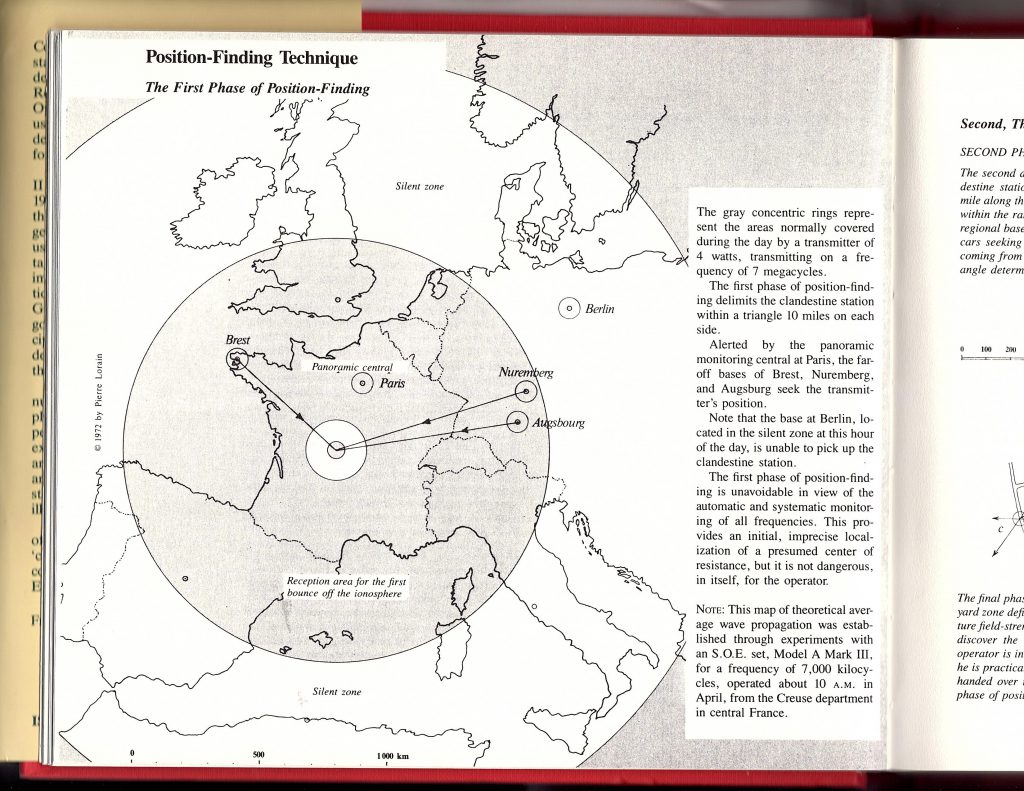
It did not take long for Gubbins, as head of operations, to spot what was wrong, or for the signals training school at Thame Park to start to impress on operators – as Beaulieu explained to organisers – that mortal danger lay in trying to send long messages by wireless.”
Yet all this is undated, and perhaps an indication why this analyst is wary is that Foot immediately follows this last passage with the following: “By the winter of 1943-4 – hardly before time – there was an order: no wireless telegraphy (W/T) transmission was to last longer than five minutes.” In the context of the war, this is an enormous chronological jump. Foot lists several other operations (Forman and Labit, DASTARD, Bloch) in the second half of 1941 that he claims were terminated because the operators stayed on the air too long, and were trapped by the efficiency of German detection-finding. Yet it is perhaps more likely that many of these agents were betrayed by sloppy tradecraft, or visible behavior that prompted the interest of citizens who felt it their duty to report such activity before they were arrested for ignoring it. In fact Mackenzie tells us that Labit (the wireless operator) had to escape to the Unoccupied Zone without his set, while his partner Cartigny was probably shot. Some gave the game away by weak identity cards, or obviously wrong serial numbers on notes, the same types of error that had bedevilled the LENA spies. In Resistance, Foot undermines his argument by writing: “Early in the war, the Germans worked the process [of interception] clumsily, but by the spring of 1943 they had main intercepting stations in Augsburg, Berlin, Brest, Nuremberg, and no doubt elsewhere.” Again, a distressing lack of precision, and a big chronological leap.
In his largely pictorial study of the use of wireless in the French Resistance, The Clandestine Radio Operators in France (2011), Jean-Louis Perquin presents an arresting account of the German special unit ‘dedicated to the detection of clandestine emissions’, describing a complex web connected to three detection-finding centres located in Brest, Augsburg and Nuremberg, and backed up goniometer trucks with equipped with the latest technology. Yet, again, chronology is vague: the text indicates that the procedure described was deployed in 1943. There is no evidence of the state-of-the-art in 1941. Perquin explains that RF agents were trained by British instructors, and also dependent on SOE equipment. “In Autumn 1941”, he writes, “following the numerous loss (sic) suffered by those specialists and considering how such losses were threatening the very existence of the networks, the SOE decided to create a security course in Grendon, Buckinghamshire.” Yet, if losses of agents were due to overlong transmission times, or failure to switch frequencies, one might think the problem could have been swiftly addressed through tighter discipline. Gubbins’s edict of winter 1943-44, after ‘it did not take him long’ to work out what was happening, simply seems absurd.
It appears that Foot and Perquin were using the same source, but it is not clear what it is. In Resistance, Foot declares his heavy reliance on Pierre Lorain’s Armement Clandestin (1972), a book that also appears in Perquin’s Bibliography, which was translated and published in English as Secret Warfare in 1983. Lorain gives a much more reasonable account of what happened, and it is worth quoting three paragraphs in full.
“German detection methods had made decisive progress in 2 years. In 1941 and 1942, the localization of a clandestine station was extremely difficult. It could be carried out only if the operator transmitted on the same days of the week, from the same site, and on the same frequency during several consecutive hours. Direction-finding operations were not yet automatic, and panoramic reception was non-existent. The scanning of all usable frequencies was necessarily very slow and left substantial gaps.
In addition, during the final approach, each Gestapo agent had to hide a heavy suitcase containing a receiver with a loop aerial under his coat. A Tirolean cap or Basque beret tilting down over his ear just barely hid an earphone. Their general posture aroused the curiosity of even the most naïve of passersby.
The arrest of a radio operator thus required long months of continual surveillance, the operation was complicated by the fact that if a clandestine operator was spotted in the unoccupied zone of France (controlled by Vichy), the Germans could only signal the suspect frequency to the French radio control group at Hauterive near Vichy. The latter promised to look into the matter, but secretly warned the clandestine station to move as quickly as possible, and then supplied the Germans with an almost completely false position.”
The Funkabwehr article I referred to before contains nothing about operations in France against SOE. I have been advised that the unit’s records reside somewhere in Moscow, so one cannot judge how much of Lorain’s account is true. Yet it seems as if Foot’s official history tries to deflect attention away from other systemic problems in SOE’s deployment of wireless. (His comments above need to be transferred en bloc to the state of the game in 1943 onwards, a period I shall cover in a later article.) A careful reading of Mackenzie would suggest that a number of severe problems affected both the F and R/F operations in France until 1942: a lack of radio expertise for establishing reliable wavelengths and schedules, leading to failed use; struggles with transporting and concealing the heavy equipment; inappropriate choices of agents who had unsuitable personalities; careless practices by the wireless operators, who were not always trained properly; inappropriate centralisation of transmissions because of shortage of equipment, leading to intense and long broadcasts; betrayal by agents (such as the notorious VICTOIRE); the unreliability of the local police in Vichy France. It was easier for SOE to blame German direction-finding.
And it seems more probable that other territories – and another enemy – were the arena in which the Reichssicherheitshauptamt improved its detection capabilities. As I shall explore, the Funkabwehr was provoked into quick reaction after Barbarossa (June 1941), as the Red Orchestra started tuning up, primarily in Northern France and Belgium. Colonel Buckmaster, who headed F Section, reported that, as late as August 1942, in the Occupied Zone, he had only two wireless sets, of which one was operational, while in the Unoccupied Zone, the numbers were six and four. In Belgium, however, the following distressing tale emerges, as German counter-action took place. In the First Quarter of 1941, two out of 9 sets had been captured and operated by the Germans: the figures for the next three quarters were 5 out of 6; 8 out of 8; and 7 out of 8. I shall return to the topic of whether German RDF advanced faster in Germany, because of the activation of the Red Orchestra after Barbarossa, and explore how soon operations in France were able to take advantage of such breakthroughs. Overall, my conclusion would be that the sluggishness with which SOE mobilised its wireless communications, and the slow but steady steps by which the Funkabwehr moved into action against Communist spies in the latter half of 1941, suggests that Foot’s suggestions of hyperactive German detection-finding in 1941 are premature, and that the losses were due to other causes.
In any case we know that SOE was inhibited by the fact that SIS controlled its cyphers and communications until June 1942. Up until then, it had had to accept whatever equipment SIS gave it – clumsy and heavy apparatus. As Foot writes: “Agents were not best pleased at SIS’s first offering, a plywood box that weighed some 45 lb. (20kg), already looked old-fashioned and contained a Mark XV two-valve transmitter fitted with a morse key, and its power-pack, a 6-volt car battery.” Foot does not describe the travails that agents lugging a 45-lb. suitcase around an unfamiliar terrain must have experienced, let alone the difficulties in setting up a suitable aerial without drawing attention to themselves.
The conclusion about SOE’s (and specifically Gubbins’s) track-record concerning wireless up to 1942 must be that the operation was needlessly clumsy. It cannot all be blamed on SIS. I read A. R. B. Linderman’s Rediscovering Irregular Warfare: Colin Gubbins and the Origins of Special Operations Executive (2016) in the hope of acquiring some deeper insights. Linderman informs us that a Frederick Nicholls served under Gubbins as director of signals during World War II, but that is the only mention that Nicholls merits in the Index, and the story is disappointingly thin on wireless matters. Maybe the skills of Nicholls, who ‘had managed to establish wireless communications with the British Embassy in Kabul during the Third Anglo-Afghan War’ (which occurred between May and August 1919) were stretched by the exigencies of communications in Nazi-occupied Europe if that was his premier achievement. The clumsiness of SOE’s wireless strategy would however endure until the end of the war, as I shall explain in a later episode.
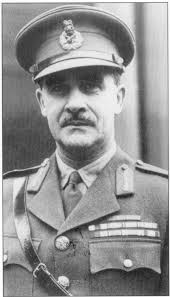
The Red Orchestra
While the Comintern and its allies had enjoyed successful experiences with illicit wireless transmission in the 1930s, Stalin’s purges of 1937 and 1938 had required much of the Soviet Union’s networks in the West to be rebuilt. It was not hard to find native Soviet sympathisers outside Germany, since the propaganda of communism as the only effective bulwark against fascism had worked effectively both on the disenchanted ‘toiling masses’ as well as on the guilt-ridden intellectuals. Since Hitler had either executed, incarcerated or forced into exile any members of the Party, or outspoken supporters of communist doctrine, Germany remained a more difficult country to penetrate. But neighbouring nations provided a rich source of potential spies and informants: many eastern Europeans found homes in the Low Countries and France, for instance, and were able to fade into the background without being conspicuous. Britain had its own nests of spies, of course, both from the older universities – who had successfully detached themselves from any association with the Communist Party of Great Britain – as well as more traditional working-class enthusiasts. But these eager adherents to the cause of the proletariat needed managing, and directing in their efforts. They needed intermediaries, and they need a mechanism for getting the fruits of their espionage back to Moscow.
Soviet espionage had three arms – the Comintern, the NKVD, and military intelligence, the GRU. David Dallin, in his epic Soviet Espionage (1955), informs us that, as early as late 1935, “Only a comparatively small Soviet apparat now remained in Germany: the greater part of the network had either been dissolved or moved abroad. The OMS had moved with the Comintern’s West European Bureau, the WED, to Copenhagen; the passport apparat had gone to the Saar, and Soviet military intelligence to Holland and France; the party leadership had migrated part to Prague and part to Paris.” Thus what survived the purges (with the GRU the most hard-hit) was still a very fragmented approach to intelligence-gathering, with no guarantee that it would be efficiently shared back in Moscow. In Volume 2 of his biography of Joseph Stalin, Waiting for Hitler, 1929-1941, Stephen Kotkin writes (p 496) that a dozen NKVD station chiefs abroad were arrested in 1937-1938, and that, in Berlin, ‘Stalin cleaned house, arresting nearly every NKVD operative there’. The GRU suffered even more, with 182 operational staff arrested in the same time-period. Yet the growing menace of Germany and Japan meant that, under Beria, a rapid repopulation of the networks had to be accomplished.
The International Brigades in Spain had constituted a useful source of potential operatives, as well as an opportunity to grant new identified to infiltrated agents, by virtue of the passports that had been stolen from Brigade members when they entered Spain. Alexander Foote was a famous example of such a footsoldier who was plucked from obscurity to be sent to Switzerland to received training in wireless operation from Ursula Kuczynski, agent SONIA. At the end of 1938, agents in their dozens started arriving in Europe, as well as the Far East and the United States. Like the Nazis, but with far more deliberation and craft, the Soviets chose, or allocated citizenship to, agents who would never arouse suspicion owing to domestic (Russian) nationality. The complex borderlands of the old Russian Empire provided a rich environment for muddled heritage and absence of reliable documentation, in order to allow unverifiable accounts of life-history to be passed off.
Accounts of training for wireless activity are thin on the ground. SONIA’s memoir (which in these technical aspects is probably much more reliable than in political observations, such as her absurd accusations of imperialistic infiltration helping to crumble the Soviet Union) is certainly not typical. For she was respected enough to avoid the purges, and also had had a long experience in China as a wireless operator before being recalled to Moscow for leave and ‘discussions’ in late 1935. Her account is unfortunately very muddled in chronology, but it is educational in that it clearly identifies some of the problems that illegal wireless operators would experience anywhere in Europe. After a brief interlude with her family in London, she was then sent to Danzig, then a ‘Free City’, where she was instructed to ‘obtain residence permits, find work to legalise our existence, and set up our transmitter for radio contact with the Soviet Union’.
SONIA had been instructed how to build a transmitter in China, by her lover, Ernst, and claims that she received a response from Moscow immediately she set up her apparatus. Her task was to advise a group of labourers undertaking occasional sabotage at a shipyard building U-Boats in Danzig (where the Nazis were outrageously breaching the constitution that the city had been granted), and transmit on their behalf. At one stage, she and Rolf moved to a new house, but discovered that proximity to a power-station made signals inaudible, and she had to take her equipment to an apartment – a lesson that probably stood her in good stead later in England. Yet she immediately stumbled dangerously: the apartment block she chose was the residence of several Nazis, and one day the wife of them asked her whether the reception on her radio had been affected by interference. Her husband had told her he believed that someone was transmitting secretly, and was going to arrange for the block to be surrounded. SONIA even mentions triangulation of radio detection, which would have been a very early indication of the Nazis’ fears – and progress in allaying them.
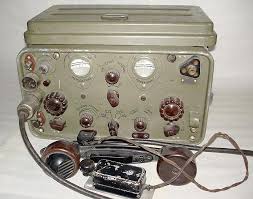
SONIA did not take the right steps, however. She broadcast again, from the same apartment at the same time, instead of the middle of the night when neighbouring radios would not have been on. She should have moved to a friend’s apartment, or returned to Warsaw. It appears that she was in awe of doing anything without Moscow’s approval: the outcome was that she was ordered to return to Poland as she could no longer transmit. Thus, when she met her boss, Comrade Andrey, in Warsaw, she asked to receive further training in wireless construction and use in Moscow. That need was reinforced by her receiving a severe electric shock one night, burning her hand. SONIA would pay two visits to Moscow during 1937 and 1938 (she admits that the details of each congealed into a blur). Her return to Poland was uneventful. She had to return to Danzig to help a comrade set up his transmitter, and admits that he was ‘slow on the uptake’, so maybe Moscow’s selection and approval processes for its agents were not very rigorous. Communist fervor may have been considered more important than intelligence and the right psychological profile. SONIA felt she was not accomplishing much: “The Danzig people had their own radio operator, the Bulgarian comrade produced little information. I only transmitted once a fortnight.”
In August 1938, it was decided to send her to Switzerland, where the plan was to infiltrate agents into Germany, to make contacts at the Dornier aeroplane factory in Friedrichshafen. And that is where the story of ‘Sonia’s Radio’ picks up, with her eventual successful establishment in Britain in the spring of 1941, and her activation as a wireless agent a few months later. She met up with Sándor Radó, who as agent DORA had been appointed head of the Swiss network, but had no wireless skills. In his memoir, Radó writes how Sonia visited in him in December 1939, and how the following month his radio contact with Moscow had been established. He also describes a visit in March 1940, set up by Moscow Central, by someone he knew only as KENT (see below). KENT spoke authoritatively about the necessity of secure wireless procedures, stressing the importance of changing the number and times of transmissions as often as possible ‘as the best protection against being located’. He added that operators should move around different residencies, as well. “Keep changing them if you can – but again, avoiding any kind of system. The thicker the fog, the better.” It suggests, again, that a prematurely intense fear of radio-detection capabilities existed with the Soviets, and that their listeners back in Moscow would be prepared to listen around-the-clock for their agents’ transmissions. But it was easier to preach such practices than to follow them.
The Soviet defector Walter Krivitsky also gave hints of subversive radio activity in Central Europe. In his memoir In Stalin’s Secret Service, he related how Marguerite Browder, the sister of the head of the US Communist Party, Earl Browder, had graduated from the school in Moscow that specialised in wireless competency, and had then been sent abroad as an illegal with an American passport issued in the name of Jean Montgomery. “During 1936-1937 she worked in Central Europe where she laid the ground for the establishment of our secret radio station,” he added, with an unhelpful lack of precision. If we can rely on Krivitsky, shortly before his recall to Moscow Sergei Spiegelglass, sent on a deathly mission by his OGPU boss Yezhov, tried to get Krivitsky to assist in the assassination of his friend and colleague Ignace Reiss. When Krivitsky demurred, he then asked Krivitsky to hand Browder over to him, as he had an ‘important job’ for her in France. The implication in Krivitsky’s rather fractured account is that he managed to warn Browder of what Spiegelglass had in mind for her, and that she was able to continue with her wireless activities.
In his biography of Kitty Harris, The Spy With Seventeen Names, Igor Damaskin informs us that the European network was issued with much more sophisticated wireless equipment at the end of 1936. Kitty Harris, who was Marguerite Browder’s sister-in-law, was brought back to Moscow for retraining in January 1937. She apparently showed little aptitude, and it was determined that ‘any more technical training would be a waste of time. She was later assigned to be Donald Maclean’s handler in London and Paris, where she specialised in photography.
Yet wireless usage in broader Europe at this time was sparse. It was not necessary. Moscow had its eye on the long term. The presence of Soviet legations or embassies in most capitals of the West provided a mechanism for information to be collected and then sent by diplomatic bag or courier back to Moscow. As a long-term measure, a wireless centre was set up in Brussels, where Trepper, as the new leader of the western organisation, replacing Walter Krivitsky, installed himself in March 1939. Yet, as Heinz Höhne tells us in Codeword Direktor, Trepper left it dormant, concentrating first on recruiting a team of informers, and enlarging his contacts with the world of business, the military and diplomacy. Even when war broke out, there was no quick change of operation. Only when Nazi Germany started its invasion of Belgium and the Netherlands in May 1940 did hasty adjustments have to be made. Even though the Soviet Union was in a non-aggression pact with Germany, its needs for information on Germany’s plans, and the reactions of France and Great Britain to Nazi movements, placed increasing pressure on Trepper and his cohorts to deliver.
Communication switched to radio sets when the Germans occupied Brussels, and the staff of the Soviet legation was withdrawn. In August, 1940, Trepper moved with his mistress to Paris, leaving there the unreliable playboy Sukolov-Gurevich, known as KENT, as the only agent capable of representing the GRU network. The Sokols were then recruited as wireless operators by the Soviet Embassy, and trained by someone called Duval. By June 1941, the Soviet Military Attaché, Susloparov, had moved to unoccupied France, and Trepper was in Vichy on the day that Germany attacked the Soviet Union. Meanwhile, in Berlin, more urgent plans were made in April 1941 to establish direct radio contact between the cells led by Arvid Harnack and Harro Schulze-Boysen, the Soviet spies in the heart of the Nazi administration. (Even if Stalin did not believe the rumours of a Nazi invasion, some of his intelligence officers were presumably more realistic.) In late May, two transmitters were sent by diplomatic bag from Moscow to Berlin, ‘one a small battery model and the other a large mains-powered set portable enough when broken down to fit in a suitcase’, as Costello and Tsarev describe. Harnack was chosen to be the operator, but declined, delegating it eventually to an engineer named Behrens, while Schulze-Boysen took up the challenge for his group, with much more eagerness, selecting a factory technician called Hans Coppi.
Costello and Tsarev report further: “The Berlin groups had
established several safe locations on the upper floors of trustworthy
colleagues’ houses in the countryside outside the city where the transmitters
could be assembled and their aerials run up into the attics in order to
communicate with Moscow. The Centre arranged to keep a listening watch on set
hours and days of the month, which were multiples of the numbers four and
seven.” Coppi received training from the local NKVD office, and successful
transmissions were made in the beginning of June, and picked up and decrypted
in Moscow. The infrastructure was in place when Operation Barbarossa was
started. As Dallin records the situation: “This,
then, was the setup on the eve of the Soviet-German war: a number of espionage
agencies with radio facilities and sources of information, organized but
dormant, in Belgium and Holland; rudimentary apparats in France and Denmark; a
few trading firms established as covers in Brussels, Paris, and Geneva; a
promising start in Switzerland; and a group of enthusiastic but inexpert
operators in the German capital.”
Summary
Thus, as the wartime alliances solidified in the summer of 1941 (with the USA to join the Allies a few months later) mainland Europe entered its most intense couple of years of illicit wireless transmission and detection. Many agents – as well as dedicated wireless operators – did not have a suitable profile for the tasks at hand, and had been sketchily trained. The equipment they used was frequently clumsy and unreliable. The support structures behind them had not always analysed the variables of distance, sunspots, terrain, or mechanical interference in depth enough to define the wavelengths and times that they should best operate. They frequently disobeyed best practices in their transmission techniques, and ignored rules of basic spycraft. But they all probably had an exaggerated sense of the state-of-the-art of enemy detection and direction-finding techniques at the time, and how efficient it was, and certainly used such capabilities as an excuse for sloppy behaviour when agents were apprehended. All this would change very rapidly as the battle of wits intensified in the second half of 1941, when Nazi Germany honed its capabilities in the face of the Rote Kapelle activity. The major significant conclusion is that, as Germany intensified its capabilities for detecting the threat of domestic (or imperial) illicit wireless, Britain moderated its own home coverage. Through policy and organisational change, it concentrated much more on transmissions in mainland Europe, and on the interception and decipherment of official transmissions made by the Nazi war machine.
The final observation to be made is to note the anomalous attitude of British Intelligence towards its Nazi enemy during this period. While crediting an exaggerated efficiency and skill to the Abwehr’s counter-espionage activities, in the form of effective Radio Detection- and Location-Finding, it attributed the obvious ill-preparedness of the agents (training, language, identification papers, etc.) it sent to Britain to the stupidity and clumsiness of the same organisation. Yet, while priding itself on its superiority in both regards, the British intelligence services (in this case MI5, RSS & SOE) developed casual habits in its interception of domestic illicit wireless, and also sent agents to the continent who were likewise unready or unsuitable for the challenges of working in hostile territory.
(I am again grateful to Dr. Brian Austin for giving me guidance on matters of wireless technology. Any mistakes or misrepresentation are mine alone.)
Sources, and for further reading:
SOE in France by M. R. D. Foot
SOE, the Special Operations Executive by M. R. D. Foot
The Secret History of SOE by William Mackenzie
Resistance by M. R. D. Foot
Deceiving Hitler by Terry Crowdy
Soviet Espionage by David Dallin
Codeword Direktor by Heinz Höhne
Unternehmen Seelöwe by Monika Siedentopf
Rediscovering Irregular Warfare: Colin Gubbins and the Origins of Special Operations Executive by A. R. B. Linderman
Secret Warfare by Pierre Lorain
The Clandestine Radio Operators by Jean-Louis Perquin
Wireless for the Warrior, Volume 4 Clandestine Radio by Louis Melstee and Rudolf F. Staritz
The Third Reich is Listening by Christian Jennings
SNOW: The Double Life of a World War Spy by Nigel West & Madoc Roberts
Operation Blunderhead by David Gordon Kirby
Sonia’s Report by Ursula Hamburger
Codename Dora by Sándor Radó
The Duel by John Lukacs
Double-Cross by Ben Macintyre
Hitler’s Spies by David Kahn
Fighting to Lose by John Bryden
Deadly Illusions by John Costello and Oleg Tsarev
Secrets of the British Secret Service by E. H. Cookridge
Codebreakers: The Inside Story of Bletchley Park by Alan Stripp & Harry Hinsley
Bodyguard of Lies by Anthony Cave-Brown
Secret Days by Asa Briggs
The Searchers by Kenneth Macksey
The Spy With Seventeen Names by Igor Damaskin
In Stalin’s Secret Service by Walter Krivitsky
The Guy Liddell Diaries, edited by Nigel West
The National Archives at Kew, London
This month’s Commonplace entries can be found here.

